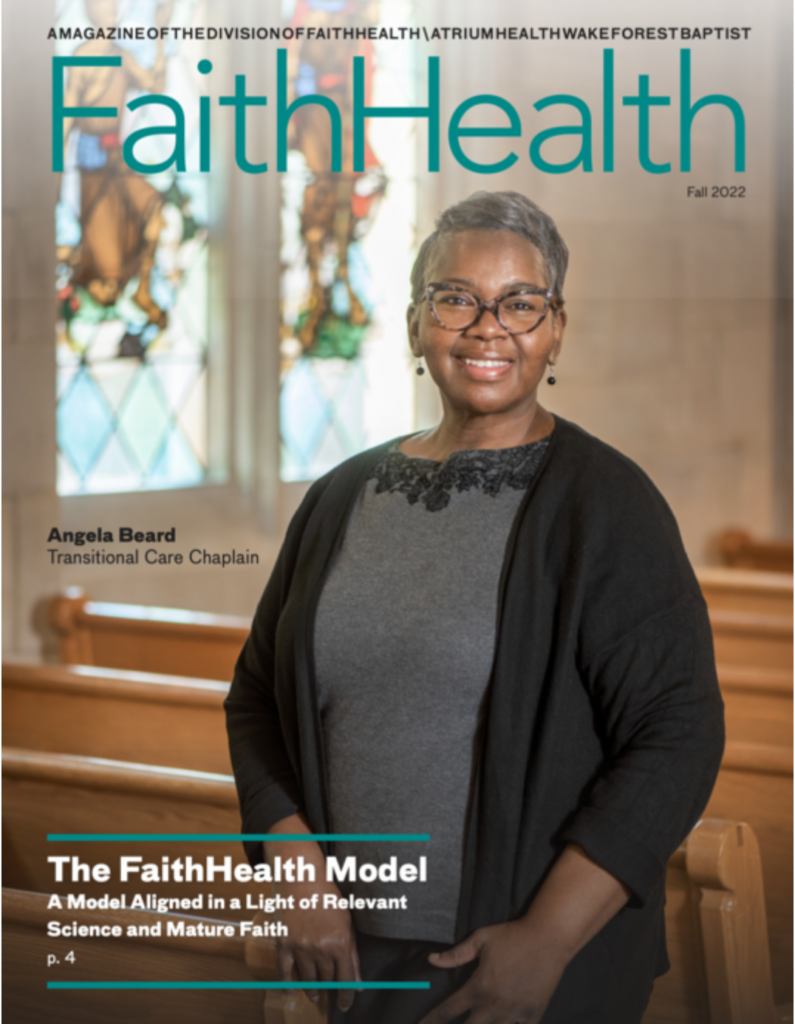By Gary Gunderson
It’s common in professional circles to warn young professionals to “stay in their lane,” borrowing from a swimming metaphor, where you can’t hurt people or embarrass yourself by wandering into someone else’s lane.
It’s a way of telling someone to work within his or her limits and keep their mind on the problem with which they are qualified to deal. This is good advice, except when the problem doesn’t fit in anyone’s lane (usually 6 feet wide and 25 yards long). What if the problem doesn’t fit inside the building or inside the reach of any one kind of organization, government or church? What if the problem runs out of control from one generation to the next?
Then it’s time to abandon the idea of lanes and indoor pools entirely, along with the kiddy floats. It’s time for an adult swim out beyond the breakers, where the tides run strong and strange creatures lurk.
In the deep end, you’ll find opioids mixed with poverty and the cycles of incarceration, education that doesn’t fit the real world, and families coming apart or never coming together at all. You’ll find faith untethered from facts, with congregations wondering what happened to their neighborhoods. You’ll notice that the leading causes of death are all linked to choices we seem incapable of getting right: tobacco, pain medications, unhealthy food, too much sugar and alcohol consumption, business and government off the rails.
 These problems confound us and defy answers. They are all part of a class of problems known in public health as “wicked.” While they may not want to imply the moral resonance of the work, people of faith see that as the key to understanding; all of these problems go way beyond the technical and live right in the heart of the shadows the great prophets addressed. To paraphrase Micah: “You know where to start, with the love of mercy, commitment to justice and walking humbly in the light of God’s intentions.”
These problems confound us and defy answers. They are all part of a class of problems known in public health as “wicked.” While they may not want to imply the moral resonance of the work, people of faith see that as the key to understanding; all of these problems go way beyond the technical and live right in the heart of the shadows the great prophets addressed. To paraphrase Micah: “You know where to start, with the love of mercy, commitment to justice and walking humbly in the light of God’s intentions.”
The challenges that now face us seem new and overwhelming, but this is true only if we think we can deal with them inside this discipline or that specialty. It’s true if some problems were only for government, some for business, some for nonprofit organizations and a few left over on the end of the list for churches.
Wicked problems: nothing new
This is not all new. Thoughtful people have been reflecting on the disconnection between our astonishing wealth, our sophisticated engineering and science, and the seemingly intractable problems of our age.
In 1973, Horst Riddle and Melvin Webber wrote the seminal article about wicked problems that define the modern age. Their key insight was that wicked problems are poorly engaged by single-answer engineering minds (the same folks who want people to stay in lanes). They noted 10 characteristics of wicked problems (see bottom of post). They both died well before the opioid epidemic hit its peak, but neither would have been surprised since it fits all 10.
Their most interesting insight is that wicked problems tend to be defined by whatever answer you already have on the shelf. A pharmacist looks at opioids as a problem of the pills, an economist as a “market,” others as working-class vulnerability that makes them work through pain, a poor fit between education and jobs, failure of spirit or political collapse.
In 1922, leaders of the Baptist Convention of North Carolina looked at the 100 counties they intended to serve and saw wicked problems. They thought that a children’s home and a hospital would be part of the answer, but not off on their own. They intended that the nurses educated there would work with the congregations so that God’s complex, many-faceted healing would flow through many channels, hands and sites into the community.
That was a good idea. And still is.
 In its essence, that is the simple idea of FaithHealthNC. We have a lot more science to work with and more wealth than the Baptists of the 1920s would ever have imagined (their little $60,000 hospital is now the hub of a $3.5 billion medical center with 14,000 doctors, nurses and staff).
In its essence, that is the simple idea of FaithHealthNC. We have a lot more science to work with and more wealth than the Baptists of the 1920s would ever have imagined (their little $60,000 hospital is now the hub of a $3.5 billion medical center with 14,000 doctors, nurses and staff).
On the other hand, they might echo the words of a visitor from Norway last year who, looking at America’s medical systems, wondered at how we can do little with so much. With all our science and tools, we are still overwhelmed by problems that seem way too much like the ones of the early 20th century — the wicked ones tied to global economics, shattered families and towns left behind. Many within the medical systems ask the same question as they are forced to treat the patients of poverty with the blunt instrument of an emergency room.
Answering with fierce and faithful commitment
What is the opposite of wicked problems? Rather than the fractured, disconnected parallel approach (there are those lanes again!), we need a fierce and faithful commitment to those most tangled in the deadly and wicked webs. For God so loved the world, that we find the power to love it, too.
What first? A) Go to the point of pain where everyone else is running away and open your mind, heart and spirit as wide as possible. Take it all in— every bit— and don’t look away. B) Look around and see who else is there with you. You’ll probably find some folks you don’t know and didn’t expect (just as they didn’t expect you).
To get an idea, stand in the parking lot of any hospital, and you’ll see the ambulance pulling up with opioid overdoses every hour. Of course, notice (and say a prayer for) the one on the gurney. And their kids, friends, brother, sister, mom and uncle. But who is driving the ambulance? Care for them, too (can you imagine doing that 12 hours in a row?).
Notice the police officer, who probably called the medics, and the staff in the emergency room, which these days includes specialized people called “peers” who are living on the other end of addiction. You’ll find a chaplain, maybe with tattoos and lived experience of their own, tuned to the tough streets and the possibilities of release from their many kinds of captivity.
You won’t see them in the ED much, but if you went to the streets, you’d find other staff making the living connections emerging on the boundaries right in between the hospital, congregations and the many other community partners.
The opposite of wickedly complex problems is blessedly complex webs of trust, committed to embodying hope by loving mercy, doing justice, humbled by the power of God’s endless and undefeatable compassion.
Showing up
It begins with showing up. And then quickly leads to wanting the skills, insights and partners equal to the fears and more. Once you know the names of those caught in the web of problems and the names of those rising up in the web of trust, you can never go back to the anonymity of mere data and political abstractions.
 In little Winston-Salem today, someone who works for the Division of FaithHealth—or one of our closest working partners among the first responders, or homeless, recovery, hunger or jail—knows the names and faces of nearly every single one of the brothers or sisters or mama’s kids involved. These aren’t abstract victims or numbers; they are the ones that God so loves— and makes it possible for us to love, too.
In little Winston-Salem today, someone who works for the Division of FaithHealth—or one of our closest working partners among the first responders, or homeless, recovery, hunger or jail—knows the names and faces of nearly every single one of the brothers or sisters or mama’s kids involved. These aren’t abstract victims or numbers; they are the ones that God so loves— and makes it possible for us to love, too.
Just as wicked problems interweave with each other making their solution nearly impossible to imagine, so too do the blessedly interwoven webs of trust. Each facet of the answer is an asset to another part emerging, converging, lending strength and intelligence to the whole hopeful ensemble. You can’t really plan it any more than one person could fix a wicked problem. But you can set your sail expecting the wind of the spirit to blow toward the safe harbor, away from the rocks.
Don’t wait for the wind; work on the sail and learn navigation while it is just a whisper. Be ready and train. That’s what we’re doing today—building the team through acting with trust, working, training, with eyes wide open … to what might be possible even yet.
10 Characteristics of Wicked Problems
- No definitive formulation of a problem
- No stopping rule (no way to know when it’s fixed)
- Not true-false but better or worse
- No immediate or ultimate test of solution
- Every solution is one-shot with long consequences that change conditions
- No enumerable set of potential solutions
- Every problem is unique — essentially
- Every problem is a symptom of another problem so incremental steps can be undhelpful if at the wrong level of the problem
- Explanation determines the nature of the problem’s resolution so ther is no rule to determine “correct” proven or “evidence”
- Planner has no right to be wrong. It’s a human experiment on other humans.
Gary Gunderson is Vice President of FaithHealth at Wake Forest Baptist Medical Center.

